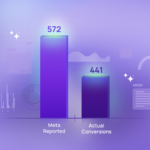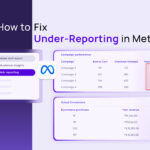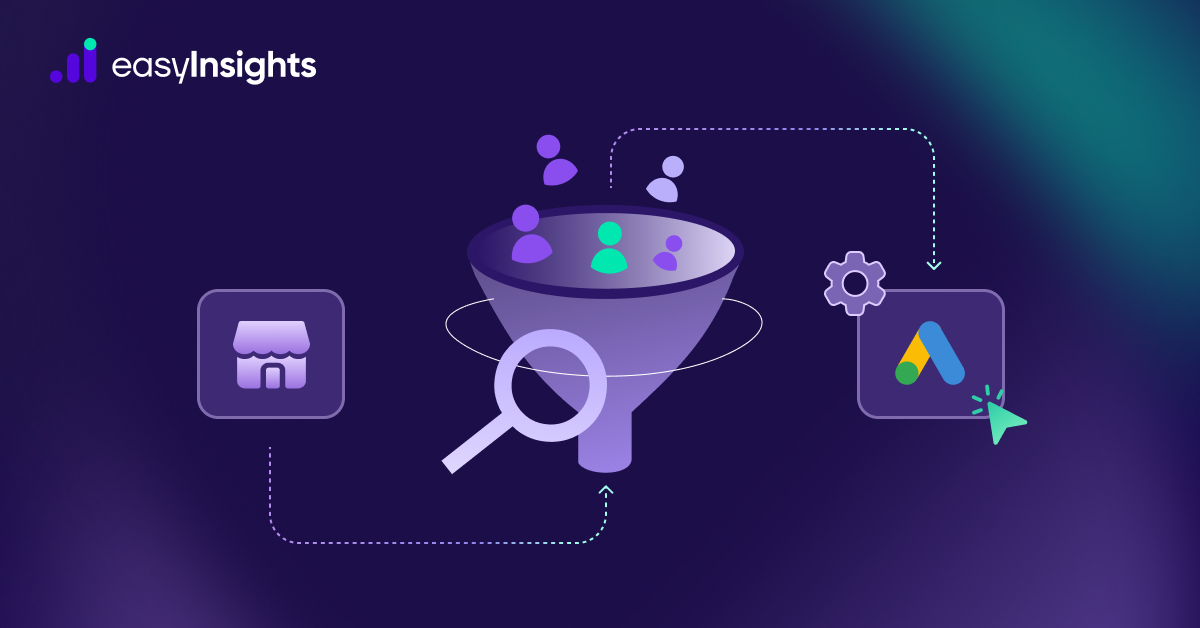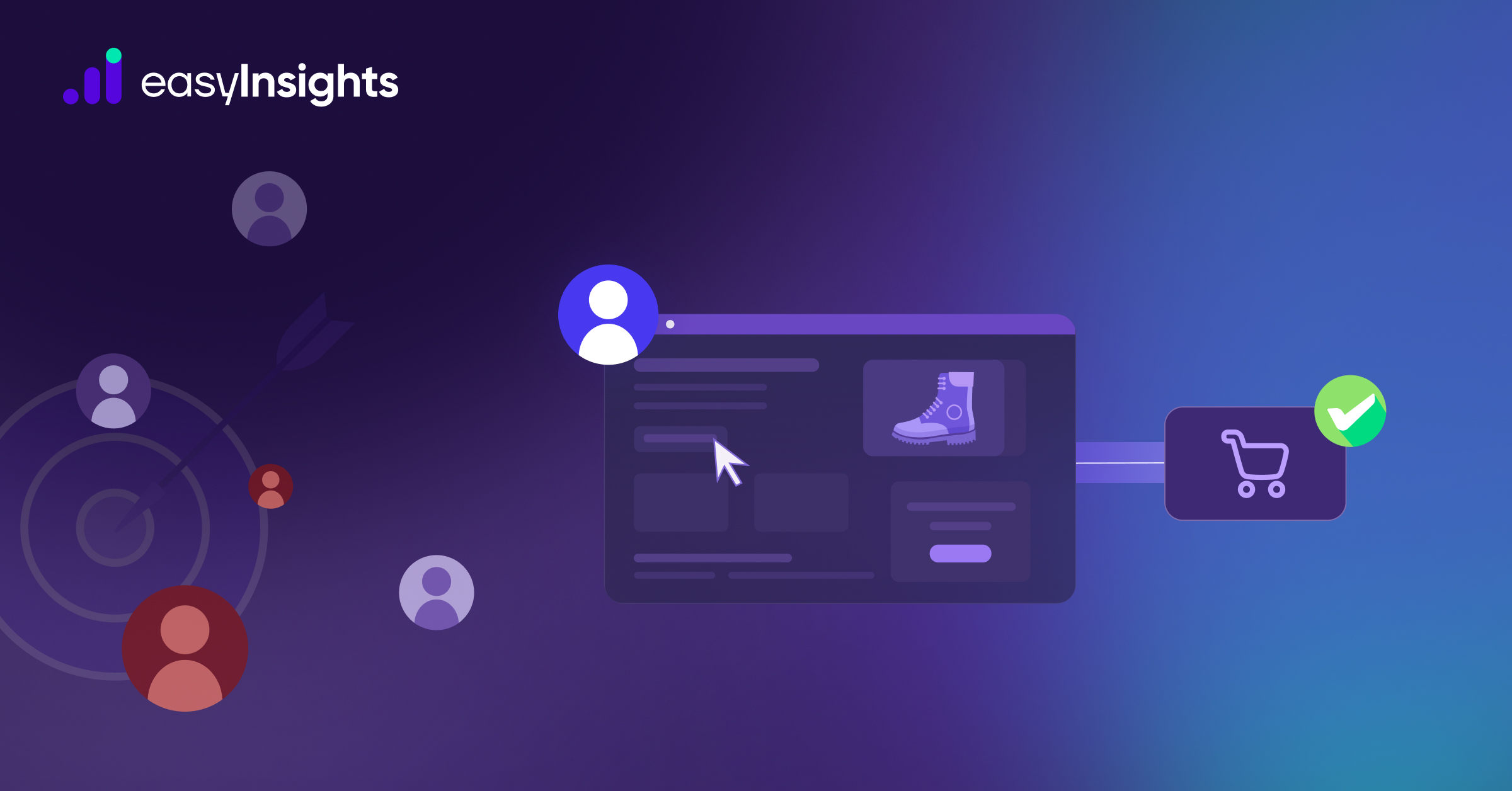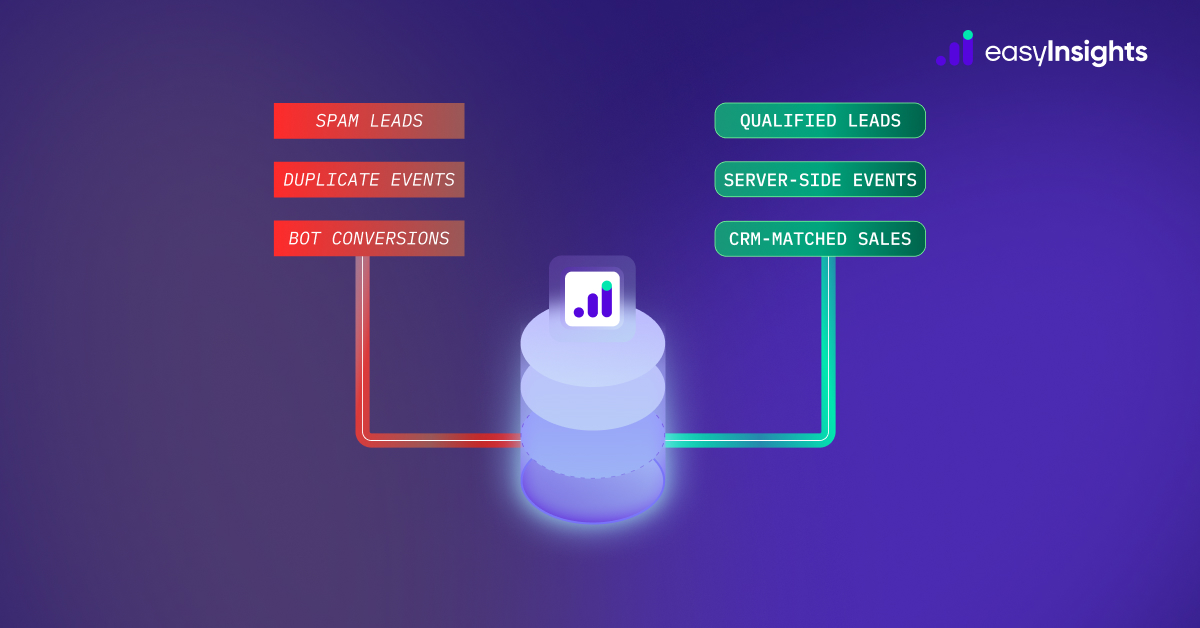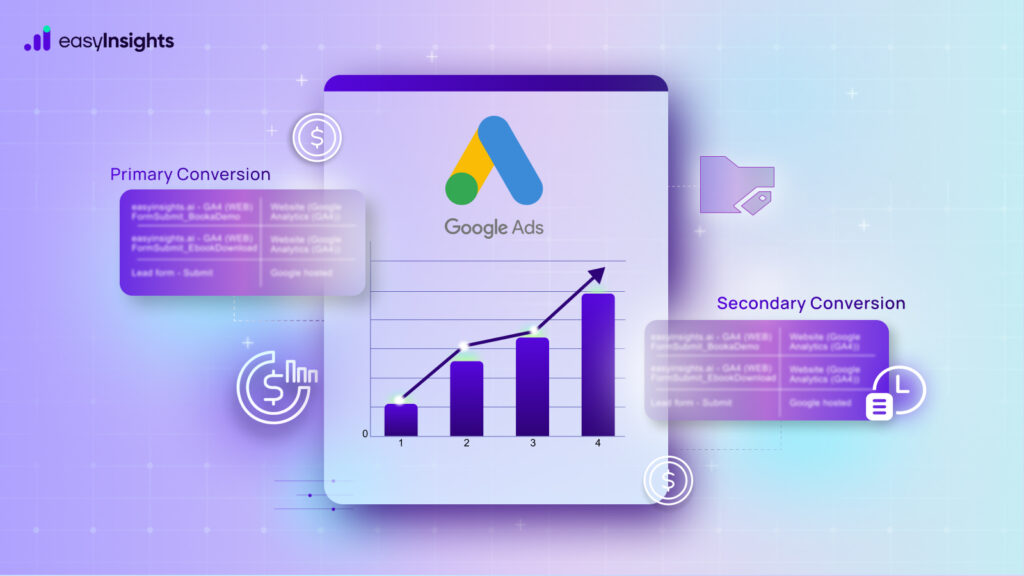
If you’re running Google Ads, one of the most important things you need to track is what happens after someone clicks on your ad. Do they make a purchase? Fill out a contact form? Sign up for a newsletter? These valuable actions are known as conversion actions, and they help you measure whether your ads are working.
To make things more organized, Google groups these actions under conversion goals, and to give you even more control, it divides them into primary and secondary conversion actions. So what’s the difference? And why does it matter for your ads? Let’s break it down simply.
Jump ahead to:
What Are Primary Conversion Actions?
Think of primary conversions as your main goals. These are the actions that matter most to your business, like when a customer completes a purchase, fills out a quote form, or books an appointment.
If you’re running a campaign to increase sales, for example, you’d set “purchase” as the primary conversion. That way, Google knows what you’re trying to achieve and can optimize your ads to get more of those results.
Where do they show up?
Primary conversions appear in the main “Conversions” and “Conversion Value” columns in Google Ads reports. They also influence how your bids are adjusted, especially if you’re using smart bidding strategies like:
- Maximize Conversions
- Target CPA
- Target ROAS
Primary conversions = priority results for both tracking and bidding.
What Are Secondary Conversion Actions?
Secondary conversions are more like supporting actions. They’re still useful to track, but they’re not the core goal of your campaign. These might include things like:
- Downloading a brochure
- Visiting a specific page on your site
- Signing up for your newsletter
They give you extra insight into user behavior and can show you if someone is showing interest, even if they haven’t taken your main action yet.
Where do they show up?
Secondary conversions don’t show in the main “Conversions” column. Instead, they’re listed under the “All Conversions” column. They’re not used for bidding by default, which means they won’t impact how Google delivers or adjusts your ads unless you create a custom goal that includes them.
Additional Reading: How to do google ads conversion tracking
Primary vs Secondary Conversion Benefits
| Feature | Primary Conversion Actions | Secondary Conversion Actions |
| Main Purpose | Used for campaign optimization and bidding | Used for tracking additional insights |
| Reports Column | Shown in “Conversions” and “Conv. value” columns | Shown only in the “All conversions” column |
| Used in Smart Bidding | Yes (e.g., Maximize Conversions, Target CPA) | No (unless part of a custom goal) |
| Helps Measure Campaign Success | Directly aligns with key business goals | Tracks supporting user actions |
| Custom Columns Support | Yes | Yes |
| Common Examples | Purchases, lead form submissions, and bookings | PDF downloads, newsletter sign-ups, page views |
| Flexibilityfor Testing | Best for actions you want more of | Great for observing user behavior patterns |
| Impact on Budget Allocation | Helps Google Ads focus spend on what matters most | Doesn’t influence ad spend optimization |
| Ideal Use Case | When you want to drive conversions and ROI | When you want to gather more detailed insights |
How to Set or Change a Conversion Action as Primary or Secondary in Google Ads
Not sure how to tell Google which actions matter most in your campaigns? Whether it’s a purchase, a sign-up, or just someone visiting your contact page, you can control how Google tracks these by marking them as Primary or Secondary conversions. Here’s a simple step-by-step guide to help you update those settings:
Step-by-Step
- Log in to Google Ads
Go to ads.google.com and sign in with your account. - Open Tools & Settings
Once you’re in, look for the wrench icon in the top-right corner; that’s your Tools & Settings menu. Click on it. - Go to the Conversions Section
Under the “Measurement” column, click on “Conversions” This is where all your tracked actions live.

- Find the Goal You Want to Edit
Scroll through your list of goals and click on the one that includes the conversion action (like “Purchase” or “Lead Form”) you want to update. - Edit the Goal Settings
Click the “Edit goal” button next to it. This opens up your conversion actions linked to that goal. - Choose Primary or Secondary
You’ll see a list of actions. Next to the one you want to change, click the dropdown menu and select either:
- Primary (if it’s a key result you want to optimize for)
- Secondary (if it’s just for tracking and insight, not bidding)
- Save Your Changes
Once you’re done, don’t forget to hit Save.

Conclusion
Understanding primary vs secondary conversions in Google Ads is like knowing which customer actions drive your revenue and which ones offer helpful clues about interest. Primary conversions like purchases or sign-ups are what you want more of, while secondary conversions like PDF downloads or page visits help you spot warm leads and user intent.
At EasyInsights, we make it even easier to track and analyze both. Our platform helps you bring together all your conversion data across campaigns, channels, and goals so you don’t have to switch between tools or manually slice the numbers. You get a complete view of your marketing performance, know which actions are moving the needle, and make smarter decisions faster.
Whether you’re optimizing for ROI or just want a better grip on what your users are doing post-click, EasyInsights helps you track what matters, reduce guesswork, and grow smarter.
Book a demo today to know more!


